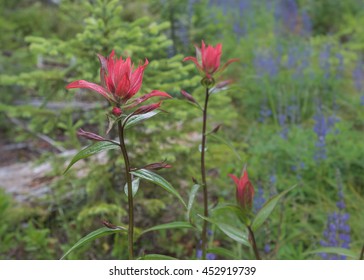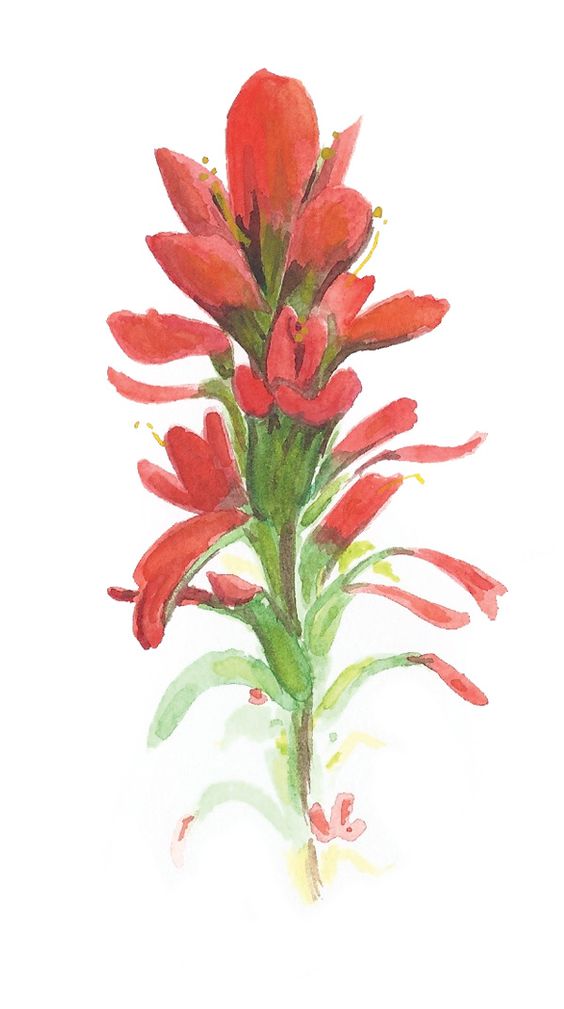Indian Paintbrush Flower Watercolor Painting Giclee Print Fine Art Print SusanWindsor 5 out of 5 stars (2,931) $ 8.00. Add to Favorites Indian paintbrush 100 MegaPAK. Learn how to Paint Indian Paintbrush one stroke at a time in acrylics. Easy beginners lesson that anyone can do. Learning to paint can be easy and enjoyable. Indian Paintbrush is an American film production company founded in 2006 by businessman Steven M. It is based in Santa Monica, California. Indian Paintbrush specializes in the production and distribution of mainly comedy-drama and romantic films. Since 2007 with The Darjeeling Limited, Indian Paintbrush has had a production credit for each of filmmaker Wes Anderson's films, including The.

The Legend of the Indian Paintbrush is a folktale for children’s aged 4 -8. This folktale is the story of how the flower, the indian paintbrush, came to be. It tells of a young boy called Little Gopher who longs to be one of the warriors of his people, but who is told by his shaman, and in a dream vision, that his gift lies elsewhere. Buy indian paintbrush paintings canvas prints designed by millions of independent artists from all over the world. Our indian paintbrush paintings canvas art is stretched on 1.5 inch thick stretcher bars and may be customized with your choice of black, white, or mirrored sides.
.jpg)
The magnificent Texas Bluebonnet is the undisputed star of the wildflower show that premiers every spring in the Lone Star State. This beautiful state flower is always a sight to behold when it makes its debut along our highways and byways. The Indian Paintbrush, another beautiful flower, has earned a costarring role alongside the bluebonnet. These two flowers are often seen together, complementing one another on nature’s springtime screen. Here are five interesting facts about this costar in the Lone Star State’s springtime wildflower extravaganza.
1. How the Indian Paintbrush was named.
Indian Paintbrush Watercolor
The name of this flower is based on the legend of an Indian who wanted to paint a sunset. Frustrated that he could not produce any of the colors that matched the beauty of a sunset, he asked the Great Spirit for help. The Great Spirit provided him with paintbrushes to create his painting. After completing his work, the artist then discarded his used paintbrushes around the landscape. These paint bushes later blossomed into plants. Another similar Native American legend also involves an artist whose discarded paint brushes became flowers.
2. The Indian Paintbrush has several aliases and uses.
This beautiful flower is also known by other names like Texas Paintbrush, Scarlet Paintbrush, Grandmother’s Hair, Common Red Paintbrush, Butterfly Weed, Prairie Fire, Painted Cup, and Painted Lady. Most folks prefer to call it by its most popular name — Indian Paintbrush.
The name Grandmother’s Hair is attributed to the Chippewa Indians who used the plant to treat women’s diseases and rheumatism. The Navajo Indians also used the plant for medicinal purposes. And, Native Americans soaked the plant in grease to make a hair oil.
Indian Paintbrush Painting
3. Indian Paintbrush are parasitic.
Don’t be alarmed. This means that the Indian Paintbrush rely on other plants to grow. When the roots of the Indian Paintbrush come in contact with the roots of other plants and grasses, they latch on to their neighbor’s roots to get additional nutrients. So, the next time you see Indian Paintbrush growing alongside Texas Bluebonnets, you can pretty much know what’s going on. Those free-loading paintbrushes are actually soaking up nutrients from their blue clad neighbors.
4. Indian Paintbrush are made up of bracts.
From a distance, it appears that the slender stalk of the Indian Paintbrush is covered with flowers. These flowers are actually petallike bracts or colored leaves that grow below the actual flower of the plant. In the case of the paintbrush, these bracts get more attention than the inconspicuous cream-colored flowers.
5. The Indian Paintbrush is the Wyoming State Flower.
By 1916, over half of the states had already designated a state flower. The Wyoming Chapter of the Daughters of the American Revolution felt it was time for Wyoming to designate a state flower and put their support behind the Indian Paintbrush. Some objected on the grounds that there were too many varieties and the flower was not common throughout the state. However, when all was said and done, the Wyoming Legislature made the Indian Paintbrush (Castilleja linariaefolia) the official state flower of Wyoming on January 31, 1917.
SEED:
Growing your own plants from seed is the most economical way to add natives to your home. Before you get started, one of the most important things to know about the seeds of wild plants is that many have built-in dormancy mechanisms that prevent the seed from germinating. In nature, this prevents a population of plants from germinating all at once, before killing frosts, or in times of drought. To propagate native plants, a gardener must break this dormancy before seed will grow.
Each species is different, so be sure to check the GERMINATION CODE listed on the website, in the catalog, or on your seed packet. Then, follow the GERMINATION INSTRUCTIONS prior to planting. Some species don't need any pre-treatment to germinate, but some species have dormancy mechanisms that must be broken before the seed will germinate. Some dormancy can be broken in a few minutes, but some species take months or even years.
 Seed dormancy can be broken artificially by prolonged refrigeration of damp seed in the process of cold/moist STRATIFICATION. A less complicated approach is to let nature handle the stratifying through a dormant seeding, sowing seeds on the surface of a weed-free site in late fall or winter. Tucked safely beneath the snow, seeds will be conditioned by weathering to make germination possible in subsequent growing seasons.
Seed dormancy can be broken artificially by prolonged refrigeration of damp seed in the process of cold/moist STRATIFICATION. A less complicated approach is to let nature handle the stratifying through a dormant seeding, sowing seeds on the surface of a weed-free site in late fall or winter. Tucked safely beneath the snow, seeds will be conditioned by weathering to make germination possible in subsequent growing seasons. To learn more, read our BLOG: How to Germinate Native Seeds
DORMANT BARE ROOT PLANTS:
We dig plants when they are dormant from our outdoor beds and ship them April-May and October. Some species go dormant in the summer and we can ship them July/August. We are among the few still employing this production method, which is labor intensive but plant-friendly. They arrive to you dormant, with little to no top-growth (bare-root), packed in peat moss. They should be planted as soon as possible. Unlike greenhouse-grown plants, bare-root plants can be planted during cold weather or anytime the soil is not frozen. A root photo is included with each species to illustrate the optimal depth and orientation. Planting instructions/care are also included with each order.

Download: Installing Your Bare-Root Plants
POTTED PLANTS:
Trays of 38 plants and 3-packs leave our Midwest greenhouse based on species readiness (well-rooted for transit) and based on order date; Spring shipping is typically early-May through June, and Fall shipping is late-August through September. Plant cells are approximately 2” wide x 5” deep in the trays, and 2.5' wide x 3.5' deep in the 3-packs; ideal for deep-rooted natives. Full-color tags and planting instructions/care are included with each order.
Indian Paintbrush Logo
Download:Planting and Care of Potted Plants
